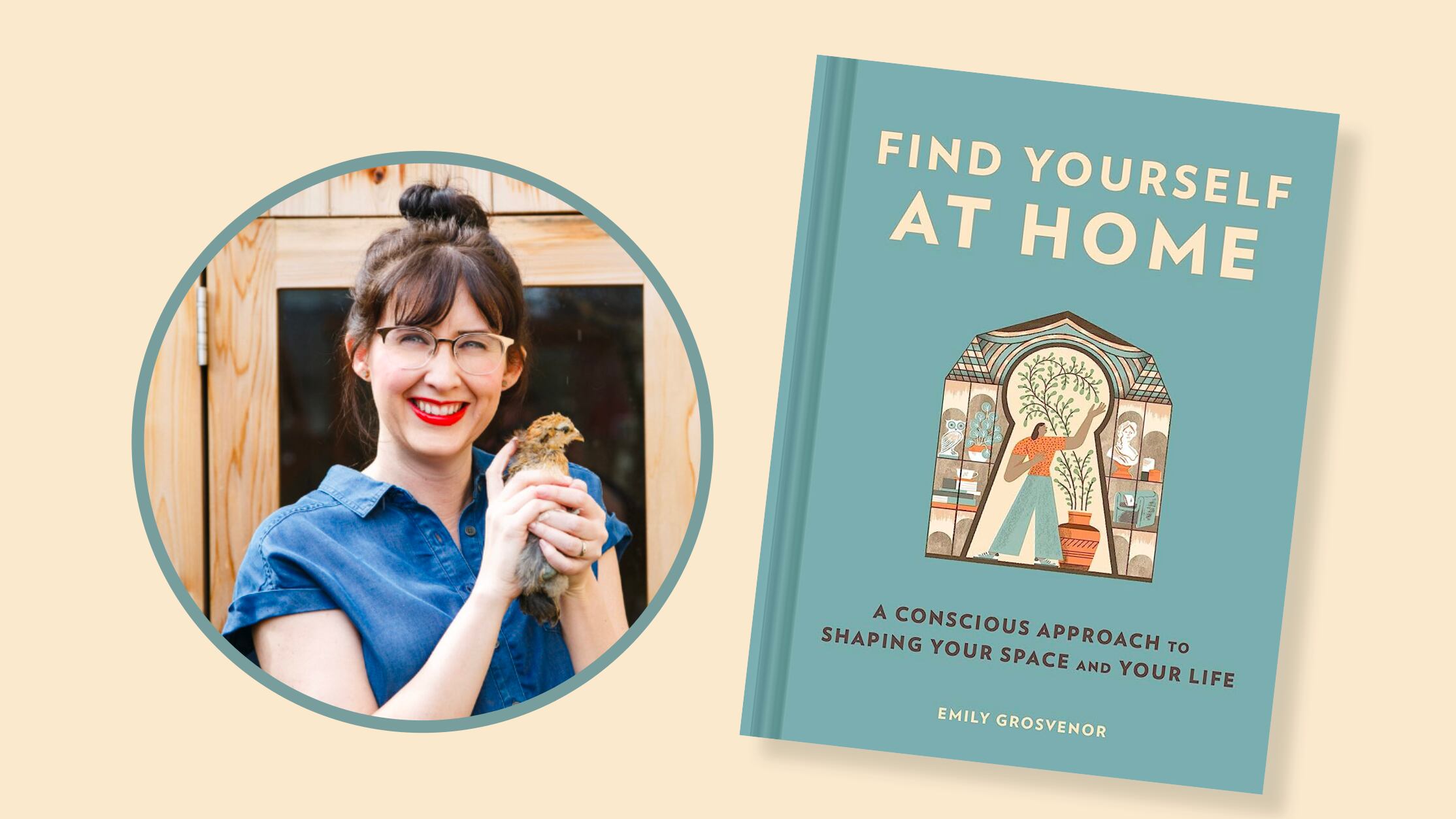Six years ago, author and Oregon Home magazine editor Emily Grosvenor found herself on the floor. After a nerve injury left her unable to sit without severe pain, she spent a lot of time lying like a slug in front of the fire (her words).
One day, “I suddenly felt the room begin to vibrate,” she writes. “I looked around and realized that while my mind was overwhelmed with a running commentary of everything that was wrong with me, my situation, and the world, there was nothing wrong, per se, with the room. I felt held.” A glorious sunlight poured through the windows—and highlighted a layer of dust coating the room’s surfaces.
“Then I did what generations of grandmas have done whenever times get tough. I puttered,” Grosvenor writes. It’s with this sense of humor, place and storytelling that she wrote Find Yourself at Home (Chronicle Prism, 240 pages, $22.95), a book about caring for yourself by caring for your home space. It reads like part memoir and part how-to guide, with a refreshed and more nuanced look at decluttering than Marie Kondo’s “Does it spark joy?” methods as seen in books like The Life Changing Magic of Tidying Up.
Grosvenor explains to WW how her five-step decluttering and rearranging methods—or as she calls it, “shaping your space so it shapes you back”—are different from Kondo’s. “It opens you up for a wider range of reflection and a wider range of emotional responses to the things that you have,” she says. “Because it’s not just ‘joy.’ People’s relationship to their objects is a lot more complicated than that, right?”
In a chapter called “The Story Your Home Is Telling,” Grosvenor talks about how to use interior design to tell the story you want to hear—which sometimes involves rewriting existing stories that we no longer want to live with. She encourages readers to “consider how you might redesign or redecorate your home to tell a different, more joyful, more empowering story–one that looks forward, not back.”
Find Yourself at Home is structured into five unique illustrated sections that ask you to look a little deeper into the whys behind your living space, and what aspects of that space can be altered to align with who you are and who you want to be. Philosophy, space, build, desire and destiny are each broken down into chapters lush with anecdotal explanations for how every aspect of one’s home works together to create energy, motivation, peace and creativity.
Each chapter ends with a “Find Yourself” prompt, asking questions like, “What are some of the stories about yourself that are no longer helpful? How might you rewrite them in your home?” A chapter called “Align Your Career and Life Path” ends with a reflection: “How do you respond when you look at your front door? Does the atmosphere in your front entrance allow you to cast off your previous self when you come inside?”
As a certified feng shui consultant, Grosvenor explains that the doorway is where the energy enters a home. “I love doorways. I’m a little bit obsessed with doorways,” she says. “It’s always the first thing I look at with a home. It’s always the first place that I suggest that people look at when they want to make a shift in their lives.”
Grosvenor says that reimagining your home doesn’t have to be an expensive undertaking, or a fast one. She references the images of homes we see in design magazines.
“It’s oftentimes taken two to three years to really create the spaces that you’re seeing in these magazines,” she says. “When you see a finished space, it can be very daunting to try to replicate that feeling, or even turn to your own space with gentleness and with any kind of affection. I think that we’re just flooded with these images of people who are really talented at what they do, and who are doing it very quickly.”
Grosvenor encourages people to take their time with the process of creating a home space that aligns with who they are and who they want to be—and “to see it as part of a creative process, and to really get to know their spaces and to really reenvision them as something that can collaborate with their lives.” And best of all, she shows that you don’t have to have a giant budget to do that right.
SEE IT: Emily Grosvenor will be in conversation with interior design professional Emilia Callero at Powell’s City of Books, 1005 W Burnside St., 800-878-7323, powells.com. 7 pm Tuesday, June 27. Free.
